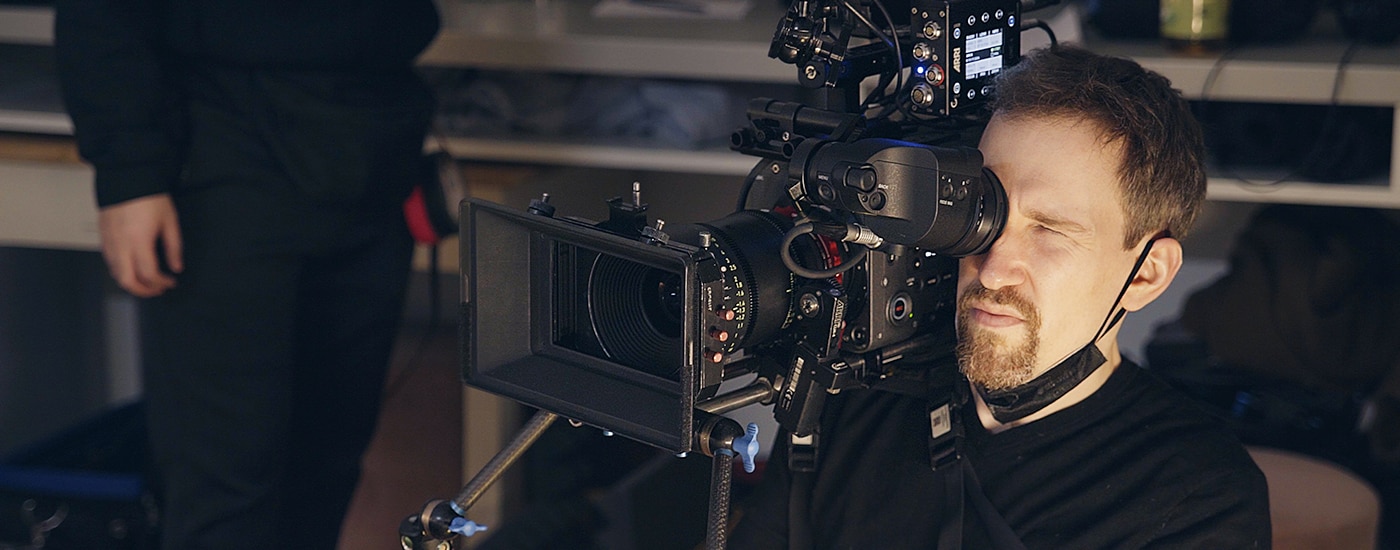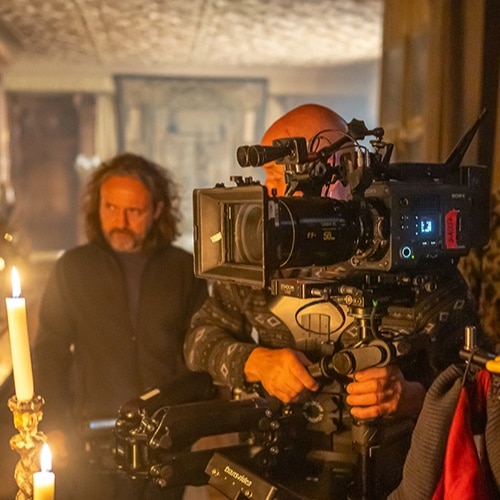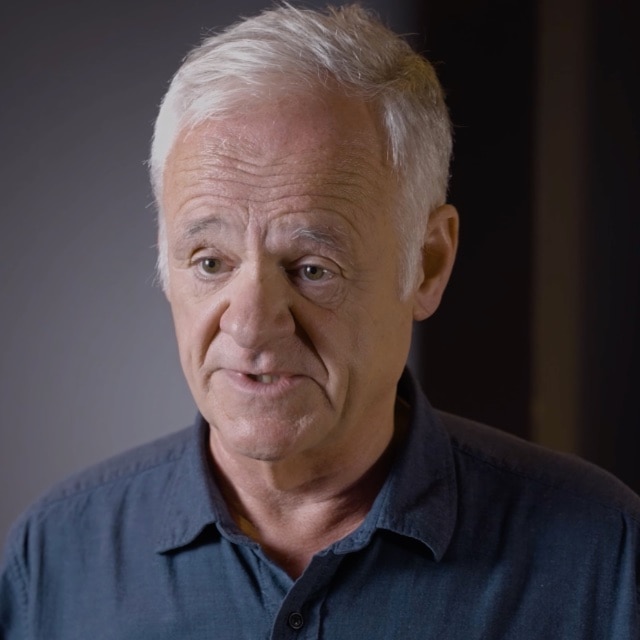Framed shot in 8K with VENICE 2
An interview with DoP Tom Keller BVK by Alister Chapman.

Berlin-based Director of Photography Tom Keller BVK recently put Sony’s VENICE 2 8K digital cinema camera to the test while shooting a pilot for a new TV series.
Framed is a coming-of-age drama series with a naive, young female influencer who joins a powerful talent agency. However, her dream job takes a menacing turn when her agent starts to control not only her posts, but her life itself. Eventually she must turn the agent’s own methods against him to survive.
It’s a very contemporary story and Keller was immediately attracted to the idea of shooting with VENICE 2. Having worked with the original VENICE camera, Keller found switching to the new camera very easy. He felt that VENICE is a simpler, easier to use camera than previous Sony cinema cameras. The reduced complexity of the menus means there’s more time to focus on the actual filming and less on driving the camera. And just like the original VENICE, he found VENICE 2 to be a straightforward and very easy to use camera.
“When I first used the Sony VENICE it was like – oh my god, this camera is simple, I don’t have to go into the menus to make it work, I can just concentrate on my job and I have a camera that records everything.”
“I really felt the difference when shooting in the car,” Keller says when asked about how VENICE 2 improves upon the original. Now that the AXS card slots are integrated into the main body of VENICE 2, you no longer need to attach the AXS-R7 recorder. This makes a typical shooting package smaller and lighter than before. The shorter length made a huge difference for Keller when shooting in confined spaces like the inside of a car. It also made for a more comfortable camera when used shoulder-mounted and he praised the reassuringly high build quality.

Steadicams and Gimbals
There was extensive use of both a Steadicam rig and gimbals during the production. Keller found that VENICE 2 worked really well on these rigs. The only small issue was when using the camera with heavy Signature Primes. With those lenses, they had to use a Ronin 2 gimbal rather than the Movi Pro gimbal they used with lighter lenses.
In one scene, they constructed an elaborate rotating rig to move the camera around the girl as she reclines in a bathtub. It was constructed by Keller and his key grip Dominic Heim and an initial test worked well. During the shoot itself an adjustment resulted in part of the rig appearing in shot. Fortunately, because they were shooting at 8.2K, they were able to compensate by slightly reframing the shot in post production without any noticeable loss of quality.

The “Vertigo Effect”
Keller also made full use of the camera’s 8.2K scan mode for shots seen at the start of the behind-the-scenes film. As they didn’t have a zoom lens, and were shooting with prime lenses, they needed a new approach to create the “vertigo effect” – where the foreground and background of a shot appears to stretch apart. They filmed a simple dolly shot with the camera moving towards the characters, then in post production started by cropping into the 8.2K frame and then reducing the amount of crop as the shot progressed to match the camera move.
Keller wouldn’t normally do a lot of reframing in post production, but having the ability to reframe later on is potentially a huge benefit. At the same time, he also thinks that being able to shoot full frame 8K and then record as 4K ProRes will be beneficial for many productions where time is at a premium.

Lighting Challenges
Many of the shots in the film take place in rooms with large windows. On the first shooting day, it was cloudy but they had enough lights to properly balance the light in the scene. The next day’s shooting location didn’t allow them to use large lights however and, to make matters worse, the sun was shining very brightly. Keller was concerned how the footage would hold up, but once they got into the grading suite and were able to look at the footage properly he was really impressed at how well the VENICE 2 handled the high dynamic range in the shots, retaining all the highlights. After grading, the footage looked great despite the very challenging lighting.
When I looked at the final results and saw that all the highlights were still there, I was really impressed
DoP Tom Keller BVK
Night shoot
One of the most dramatic scenes is a night scene with police cars and lots of flashing lights. ILC cameras struggled to correctly render the police cars’ intense blue LED lights. But these same lights didn’t cause any problems for the VENICE 2. As the use of LED lights as practical lights, which appear within many shots, becomes more common, Keller feels it’s important to know that the camera will be able to handle these often challenging lights and render the colors correctly and pleasingly.
“It doesn’t have a look,” Keller says. “It’s like looking at the real thing, that might sometimes be seen as a problem, but it means you can use lenses or grading to create almost any look you want.”
The way skin tones look is extremely important for Keller and he was impressed by the way the VENICE 2 captured and reproduced skin tones. He believes that Sony has made huge steps forward in this.

Dual Base ISOs
VENICE 2 updated its Dual Base ISOs based on DoP feedback and this certainly pleased Keller. The lower of the camera’s two base ISOs is 800 ISO – rather than the 500 ISO of the original 6K sensor – and this is what he’s used to from other cameras, making VENICE 2 even easier for him to shoot with. For the low light scenes, he used the camera’s upper base ISO of 3200 and he feels it looked great. He also pushed the camera further and further beyond this as part of testing it. While they did have more noise at these extremes, they were able to reduce this in post production and still get a great looking image. Going the other way, when there was too much light, Keller also found the consistency of the built in ND filters to be outstanding.

How is this possible?
VENICE 2 is being widely tested after its February release and a college of Keller’s also tried out the camera. In that case, they chose to shoot with the built in 4K ProRes recording mode rather than X-OCN, principally due to concerns over working with the 8K recordings. Keller, by contrast, really wanted to push the camera and shot at 8.2K using X-OCN. He expected to have to create proxies for editing or viewing. But he was delighted to find that he could actually play back and work with the original 8.2K X-OCN files on his MacBook Pro laptop. There was no need to transcode them – for him it was a “how is this possible” moment.
My own experience with X-OCN over many years has been that it is actually a very easy file format to work with, even on relatively low powered computers. Although the files are 16 bit and contain all of the information you would expect to have in a raw format, X-OCN files are between a third and 1/8th of the size of uncompressed raw. An 8K X-OCN LT file will be around the same size as a 4K ProRes 4444 XQ file.

A camera to rely upon
Asked to summarize his opinion of VENICE 2, Keller has no doubt about its appeal.
“When you work on a movie set, your camera must be such that once you have done your lighting you know that the camera will do what you need it to do.”
Keller will be using VENICE 2 again on future productions as he believes this is the first 8K camera that can really deliver the level of image quality that he wants.
I’d really like to thank him for taking the time to chat with me and wish him success with Framed. If you haven’t watched it yet, do please watch the behind the scenes film.




